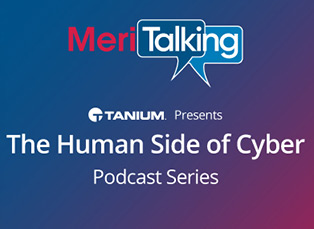
Looking towards a post-pandemic environment, training programs for supervisors and team leads will be crucial to guide employees through this workforce transformation, Federal government workforce leaders stressed during an AFCEA Bethesda event on November 3.
One silver lining from the COVID-19 pandemic is it “made leaders understand it’s okay to say, ‘I don’t know,’” Traci DiMartini, chief human capital officer at the General Services Administration (GSA) said. DiMartini said her agency is taking the time to bolster its leadership training so that supervisors can best guide and support their employees in this uncertain time.
“One specific thing I’m very proud of at GSA is in the last year, we have opened executive coaching up to all of our SES [Senior Executive Service] and strongly encouraged them to have a coach,” DiMartini said. “This year, in FY22, we’re going to expand that.”
“We’re going to keep the coaching enmeshed in our culture, and then step it up to cohort discussions,” she continued. “We’re going to start with things around topics that are very, very time-sensitive, such as leading a hybrid workforce or dealing with organizational change management.”
DiMartini explained that strong leaders are not built overnight, but through having access to “things like mentors and cohort discussions” that can help walk them through challenges they may encounter in their transition from a technical expert to a manager.
Over at NASA, Director of People Analytics Keith Krut said his agency is also revisiting supervisor training because in a virtual environment, “so much of that experience is shaped by the supervisor.”
“We’re experimenting with something called supervisor sprints that kind of follows Agile methodology sprints on certain topics,” Krut said.
He explained that these sprints are “trying to break down experiential learning” such as learning how to best operate in a hybrid workforce.

With “hybrid, for example, there is going to be part of the team in the room and part of the team not in the room,” he said. “So, the training inherently has to be tied into the technologies that you’re using and the appropriate behaviors and using those technologies,” he said. “You know, when do you use the chat versus when that’s just splintering the conversation? How do you make sure you’re not starting the conversation after the meeting with just the people in the room? All of those things that play into effective hybrid work.”
Krut said NASA is “just exploring” these supervisor sprints, but it has launched a program that incorporates regular intervals for training so that supervisors are reminded of their training courses.
“The reminder part of this is especially important, even to the extent where we may have a 90-minute course on something like hybrid meetings, but then there may be a five minute carve out that you play at the beginning of a hybrid meeting, as a reminder of some of the key things to keep in mind from that prior course,” Krut said.
Wonzie Gardner, office head and chief human capital officer at the Office of Information and Resource Management at the National Science Foundation, and Waldemar Rodriguez, associate director of Immigration and Customs Enforcement’s Office of Professional Responsibility, took the time to emphasize that now more than ever, supervisors need to be there for their employees and support them in the workforce transformation.
“This is a time when managers need to exhibit vulnerability and courageous management. And do what is right for everybody,” Gardner said. “I want to come back in [to the office]… but I want to do it when the time is right. When everybody’s ready.”
Rodriguez offered a similar sentiment and emphasized that employees should feel safe to reach out to their supervisors with any concerns, as they understand this is a difficult time for everyone.
“Know that we’re here for you,” Rodriguez said. “We’re all in this together, so if you ever need anything, feel free to reach out to me and anybody in our community. We’re there for you. And until we emphasize that, there is no workforce transformation.”
